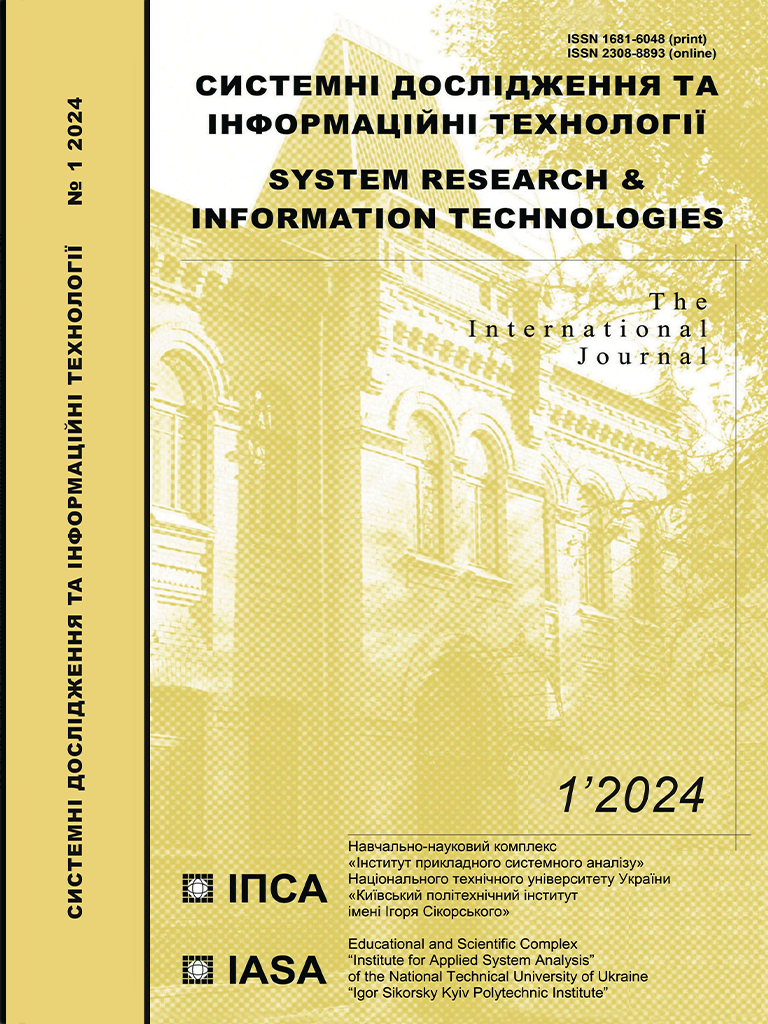Designing Petri nets with strong place and transition anticipation for real-valued functions
DOI:
https://doi.org/10.20535/SRIT.2308-8893.2024.1.09Keywords:
Petri net, strong anticipation, transition rule, reachability graph, real-valued function, next-state function, sequence of transition firings, limit reachabilityAbstract
We propose extending the classic Petri nets and considering D. Dubois’s strong anticipation in two ways. We propose to add a new term into a transition rule that contains a real-valued function of a new marking in a certain place (strong place anticipation) or of a new marking in the input place of a certain transition (an example of strong transition anticipation). Any integer constraints are not applied either to the weight function or to the marking in contrast to the classic Petri nets (as in continuous Petri nets). The execution of the mentioned nets is investigated, and important properties are stated. Several examples of reachability graphs are given, and differences from classic Petri nets are formulated. We also investigate the conditions of the equality of the markings, which are obtained by firing the sequences of transitions tjtk and tktj.
References
J. Peterson, Theory of Petri nets and system modeling. M.: Mir, 1984, 264 p.
T. Murata, “Petri nets: Properties, analysis, applications,” TIIER, vol. 77, no. 4, pp. 41–85, 1989.
R. David and H. Alla, Discrete, Continuous, and Hybrid Petri Nets. Springer, Berlin, Heidelberg, 2005.
R. David and H. Alla, “Continuous Petri Nets”, 8th European Workshop on Application and Theory of Petri Nets, Zaragoza, Spain, pp. 275–294, 1987.
C.R. Vazquez, C. Mahulea, J. Julvez, and M. Silva, “Introduction to Fluid Petri nets”, Chapter in Book: “Control of Discrete-Event Systems”, Lecture Notes in Control and Information Sciences, vol. 433, Eds. C. Seatzu, M. Silva, J.H. van Schuppen, Springer-Verlag, London, pp. 365–386, 2013. doi: 10.1007/978-1-4471-4276-8_18.
R. Rosen, Anticipatory Systems: Philosophical, Mathematical and Methodological Foundations. Pergamon Press, 1985. doi: 10.1016/C2009-0-07769-1.
D. Dubois, “Incursive and hyperincursive systems, fractal machine and anticipatory logic,” Computing Anticipatory Systems: CASYS 2000 — Fourth International Conference. AIP Conference Proceedings, vol. 573, pp. 437–451, 2001. doi: 10.1063/1.1388710.
D. Dubois, “Generation of fractals from incursive automata, digital diffusion and wave equation systems,” Biosystems, vol. 43, pp. 97–114, 1997. doi: 10.1016/S0303-2647(97)01692-4.
A. Makarenko, “Multivaluedness Aspects in Self-Organization, Complexity and Computations Investigations by Strong Anticipation”, Chapter in Book: Recent Advances in Nonlinear Dynamics and Synchronization; Eds. K. Kyamakya, W. Mathis, R. Stoop, J. Chedjou, Z. Li, Springer, Cham, pp. 33–54, 2018. doi: 10.1007/978-3-319-58996-1_3.
A. Makarenko, “Toward Multivaluedness Aspects in Self-Organization, Complexity and Computations Investigations,” Forth International Workshop on Nonlinear Dynamics and Synchronization INDS’15, Klagenfurt, Austria, Alpen-Adria University, July 31, 2015, pp. 84–93.
V.M. Statkevych, “A modification of Petri nets with anticipation on a position,” System Research & Information Technologies, no. 1, pp. 102–112, 2023. doi: 10.20535/SRIT.2308-8893.2023.1.08.
S.V. Lazarenko, O.S. Makarenko, Discrete systems with anticipation. National Technical University of Ukraine “Igor Sikorsky Kyiv Polytechnic Institute”, Kyiv, 2020.

